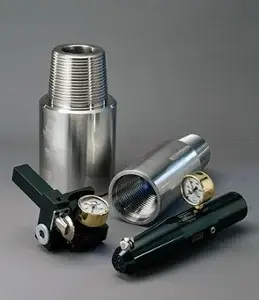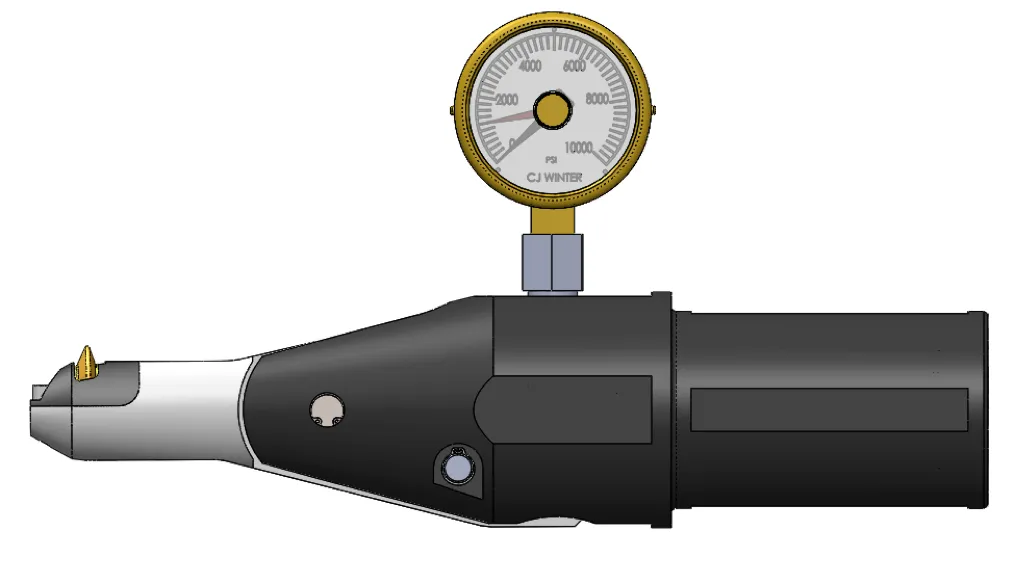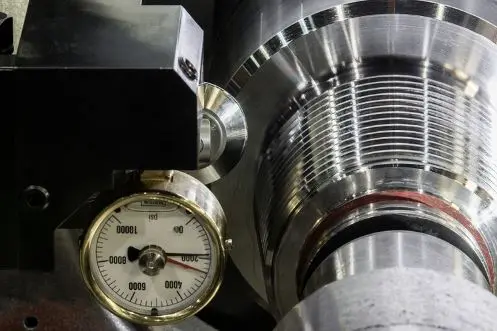There are nearly 12.5 million manufacturing workers in the United States who facilitate a broad variety of complex fabrication processes. Machining and metalworking make up a large portion of the American manufacturing industry, but not every process used in this industry is the same. This blog will explore two common manufacturing processes: cold root rolling and burnishing.
Cold Root Rolling
The process of cold root rolling reduces the effects of corrosives on thread connections, increasing their durability even in high-saturation and high-pressure environments. In this process, a hardened roller is forced over the root of a thread to burnish it.
The roller changes the atomic structure of the steel, creating a more durable material with improved resistances to corrosion, tensile stresses, cracking, and other harmful effects. Cold root rolling also smooths away scratches on the material, which could otherwise lead to chemical corrosion or harbor bacteria or other contaminants over time.
Benefits
Cold root rolling increases the joint life of threaded connections by up to 3–5 times. There are myriad other benefits to this process as well, including:
- Improved strength. The burnishing effect of the cold root rolling process changes the structure of steel material from crystalline to dislocated and interlocked through a process known as work hardening. This provides a material that is significantly more durable, reducing the chances of catastrophic failure caused by damage or flaws.
- Improved stress resistance. When a threaded connection has gone through the process of cold root rolling, it is able to more evenly distribute stress. The subsequent residual compressive stress ultimately offsets any tensile stress that impacts the critical areas of a root thread.
- Improved corrosion resistance. When steel materials are scratched, they are significantly more likely to experience corrosion. This occurs as chemicals or other contaminants find their way into the scratches and begin the oxidation process. Cold root rolling is beneficial because it smooths any scratches on the steel material, reducing the risk of corrosion.
- Easy use/integration. While the benefits of cold root rolling are clear, some tools are better than others. CJWinter’s Cold Root Rolling tools are designed to be versatile and practical while simultaneously providing maximum value. They can be integrated with Weiler, Mazak, and Fanuc programming. They are incredibly easy to use due to their asymmetric hub system, which makes it impossible to load the cold roll wheel incorrectly. CJWinter Cold Root Rolling tools feature a 1:1 pressure ratio, which eliminates the need of a complex lookup table for converting PSI to pound force
Burnishing
Burnishing is the process in which a surface is polished through contact with a different, harder object. It enables surfaces to be easily and repeatedly finished without ever removing any metal. Burnishing rolls are designed and manufactured within very tight tolerances with polished surfaces, facilitating mirror-like finishes on the parts they are used on.
Many components have slightly uneven surfaces, with peaks and valleys of differing heights. The pressure generated by burnishing rolls exceeds the yield point of the part being burnished. This causes small deformations on the part’s surface, which smooth out the peaks and valleys to create a tougher, more durable material.
Benefits
When the workpiece requires a consistent size and surface finish, roller burnishing tools are an excellent choice. They have a number of benefits, including:
- Shorter cycle times. Roller burnishing is accomplished in a single pass operation, ultimately increasing output and minimizing cycle time. This saves significant time and money. Roller burnishing can also be performed on the same primary machine that performs every other process, so there is no need for secondary operations.
- Higher product quality. The high speeds of mass production can make it difficult to properly control the surface finish of your product. Roller burnishing is an ideal choice to resolve this challenge, as it allows you to mass produce products with consistent sizes and finishes, thus reducing the number of parts that need to be rejected due to quality control issues.
- Increased dimensional accuracy. While dimensional tolerances are frequently a concern when assembling parts, roller burnishing can help ensure that part dimensions are always correct.
- Excellent surface finish. Burnishing smooths out any cracks and uneven texture, resulting in a mirror-like finish that is resistant to corrosion.
- Harder surface. Roller burnishing uses a cold rolling process to harden the surface of the metal material. This helps to increase the durability and longevity of the product.
Contact CJWinter Today
Cold root rolling and burnishing ultimately facilitate durable, corrosion-resistant parts that feature longer service lives. For more information about cold root rolling and burnishing solutions from CJWinter, please contact us today.






